-
Posts
6,486 -
Joined
-
Last visited
-
Days Won
10
Content Type
Profiles
Forums
Blogs
Gallery
Events
Store
Posts posted by Brian Wolfe
-
-
Iconic
FirearmsI thought it might be fun to start a thread
where the members could post their opinions of what they think are iconic
firearms. As you can see from what I
think is “fun” that I don’t get out much.There are objects in the world that the very
sight of them on the television or in magazines says everything. For example if you see the Eiffel Tower you
might automatically think, “Paris” or at least “France”. Of course if you were an aluminum siding sales
person you might wonder when they are going to finish it and offer to give the
French Government an estimate.
Visual objects are such a powerful statement
that any movie to do with extraterrestrial invasions always shows these
buildings. One must ask why it is that
every flying saucer seems to crash into the dome of the American Congress
building or tips over the Eiffel Tower.
Seriously, no offence to the French people or their country but you have
to admit that according to the movies alien visitors do seem to have a problems
with avoiding it.
What I am asking you to post are those
firearms that you consider iconic, that remind you of some era, event or
place. In fact let’s expand on this and
say any of your favourite firearms. There is no correct or wrong answer; it is
your opinion. This can be from your
collection or even a photo out of a book.
If you use a photo from a book please give the title and author’s name so
we don’t get into trouble with the copyright people.
Just for the “gunners” in our midst, Irish or
otherwise, let’s add the really big guns and include artillery pieces.
I’ll kick this section off with my next post,
let’s see what we can come up with to rival the medal guys.
In addition to the item in my next post there
is a bit of a quiz that goes with it for those of you who are up for some
historical sleuthing, so good luck.
Regards
Brian0 -
Hello Terry,
Thank you for setting the record and me straight.
I can see very well what you are saying about the difference in your last photo.
No need to bother with a photograph of the Martini-Henry,
I see no reason to doubt you and I certainly was not looking to start an argument, simply a matter of me being mistaken.
Me being mistaken, imagine that, now there's an all too common event.

Thanks again for posting your material and correcting the record.
Regards
Brian
0 -
Hello Terrylee,
A very nice grouping of weapons, thanks for sharing them with the membership.
Some additional information on the bayonets:
The Naval Cutlass Bayonet pattern 1858 had the rifle ring "bushed" to fit the Martini Henry rifle in 1873. A later pattern 1875 was issued with the rifle ring the "correct" diameter for the Martini-Henry.
The saw backed bayonet is the Artillery Sword-bayonet pattern 1875, some of these were later cut down and the saw teeth removed for use in trench fighting in WWI.
The shorter bayonet is the pattern 1887 Mk III (no fuller in the blade) and were designed specifically for the Mk. IV Martini-Henry rifle. This is a cut down of the longer 1887 Mk III and would have normally been used in trench warfare.
When I say "normally" I mean use by the British forces and of course we are now talking about weapons that may not have fit that regulation completely. The shorter rifle would normally be an artillery pattern as there would not have "normally" been a device for a bayonet. The general rule of thumb being that the calvary would not have a need for a bayonet as they carried swords. In this case I'm assuming these were for mounted infantry, therefore the need for bayonets. The leather rear sight guard is something that is hard to find and this one looks original.
Thanks again for an interesting post.
Regards
Brian
0 -
The Crescent Lamp
Before we leave the Crescent Lamp, (ok, who
just said “finally!’?), I’d like to touch on the ventilation for this
lamp. At the bottom, in the back, are a
number of holes to allow air to enter the combustion chamber. Without proper ventilation we would not have
much of a lamp. At the top is the
chimney which completes the ventilation system as in all lamps and
lanterns. However another innovative feature
of the Crescent Lamp is that this is detachable to allow it to be cleaned and
if necessary, replaced due to damage.
There is a pin located at the rear of the chimney, as may be seen in the
photo below, which, when withdrawn, allows the whole chimney assembly to be
removed for whatever purpose is necessary.
This pretty well covers the Crescent Lamp. The
next, and final, fuel combustion example is a unique specimen that I do not
believe to be very common, especially in the condition and completeness as it
will be presented.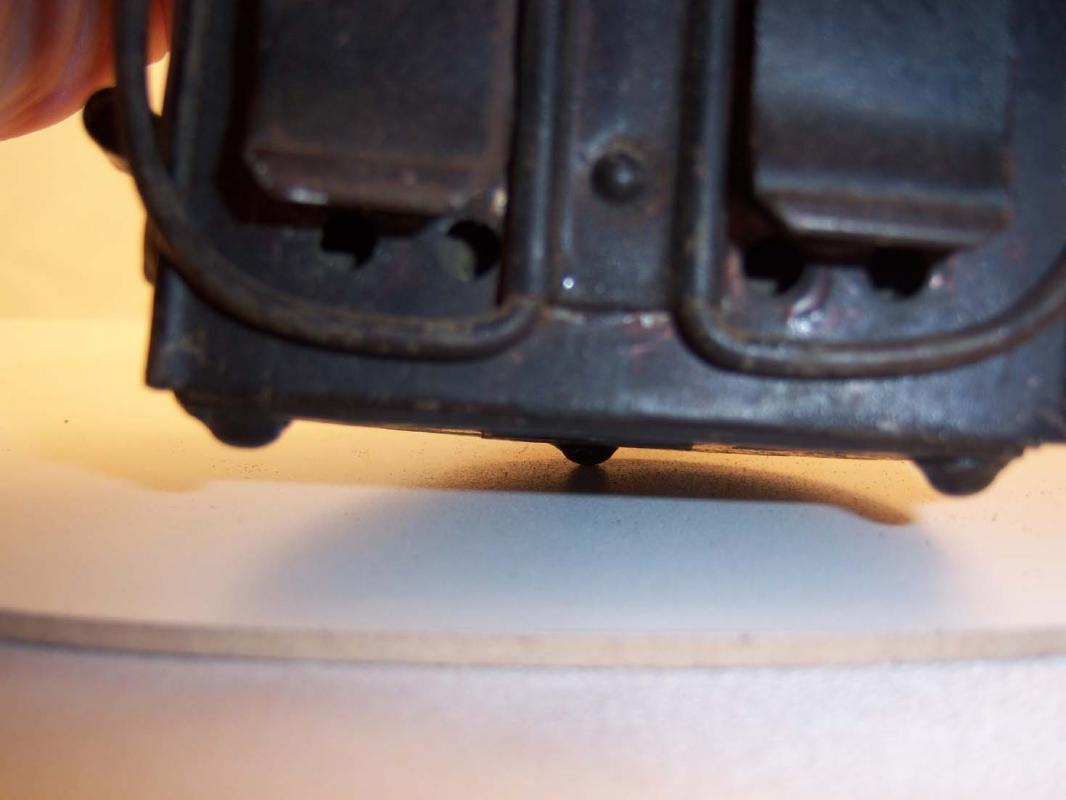
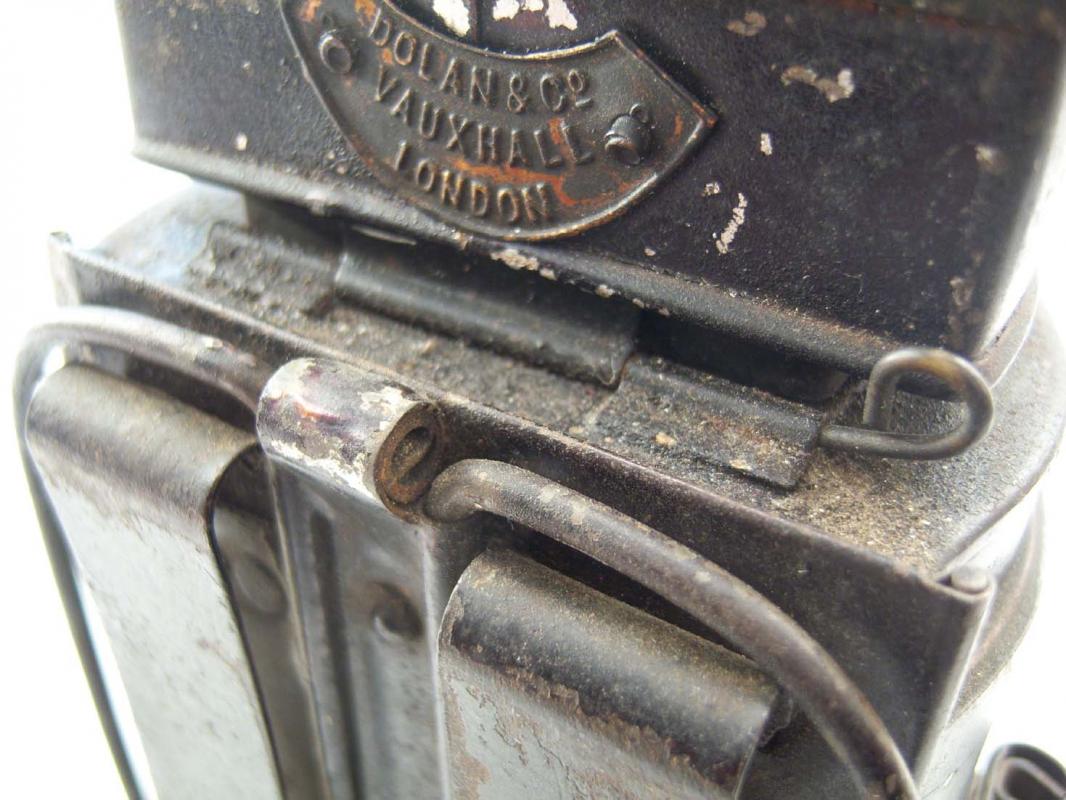 0
0 -
Not ot be picky but that would be "Governor General" of Canada. I believe he held that position in the mid 1920s.
I can not get over how these photos look after they have been colourized. It is an art, or some sort of dark magic, they are beautiful and certainly bring the whole subject to life.
Thnaks for sharing them with the membership.
Regards
Brian
0 -
Many thanks for the information Dave, it is most useful.
I apologize that I didn’t respond to you sooner, it is a good lesson not only to me but others on the forum that one should never be too busy to thank fellow members who have taken the time to share their knowledge and make this a member-friendly forum.
Thanks again, I really do appreciate you taking the time to assist me.
Regards
Brian
0 -
HI Peter,
I take it that there is not yet pitting associated with this rust and it is more surface rust than anything?
There is a product called Conservator's Wax that was sold by Lee Valley a number of years ago that I've used with great success on surface rust on blades. It is a wax cleaner and polish.
Regards
Brian
 0
0 -
Hi Peter,
That's an interesting feature, any chance of a photo?
Regards
Brian
0 -
The Crescent Lamp
The burner itself is quite unique compared with other styles of police lanterns. This particular burner fits into the lantern by sliding it into two rails in the bottom of the lantern that correspond with their opposite number on the bottom of the burner. This would prevent the burner from rattling around while in use and certainly if the lantern were to be accidently tipped on its side the burner would stay in place The whole burner may be removed for filling and or cleaning by the use of a wire ring mounted on the top of the oil reservoir tank.
The back of the oil tank has a very unique feature; there is a plate with groves running horizontally and vertically to provide a surface to strike a match to light the burner. I have never been a smoker but I have been out in the bush hunting on wet, rainy days when finding a dry rough surface to strike a match for the lunch camp fire can be an issue. If you are not too soaked through there is always a zipper somewhere but one must remember that before zippers people only have had buttons as clothing fasteners.
It is easy to see that the lantern was designed by someone who had seen service and not an engineer lacking practical experience. No slight to engineers is intended.
 0
0 -
The Crescent Lamp
Continuing on with our look at the Crescent Lamp we’ll look at the lamp’s burner chamber.
In the first photo we can see the convex reflector which is affixed to the door of the lantern. In the usual style of lantern found this reflector is found at the back of the lamp chamber and relies on the curve of the lamp body to give it a convex shape and therefore it is able to better concentrate the light. One of the disadvantages of the older style reflectors is that they are hard to polish, especially if your hand is larger. The Crescent Lamp reflector is convex on all planes where in the usual design of lanterns the reflector is convex only on the one axis while the other is flat, or straight.
I probably should have mentioned the door itself as this is probably the very first thing anyone would notice about the Crescent Lamp. The door not only allows access to the reflector but also to the oil burner itself. I hope by this point you can appreciate what an innovation this lamp was over its competition. It probably also begs the question, “How can a grown man get so excited about an old police oil lamp?” Of course if you stayed with this post this far you can answer that question yourself.
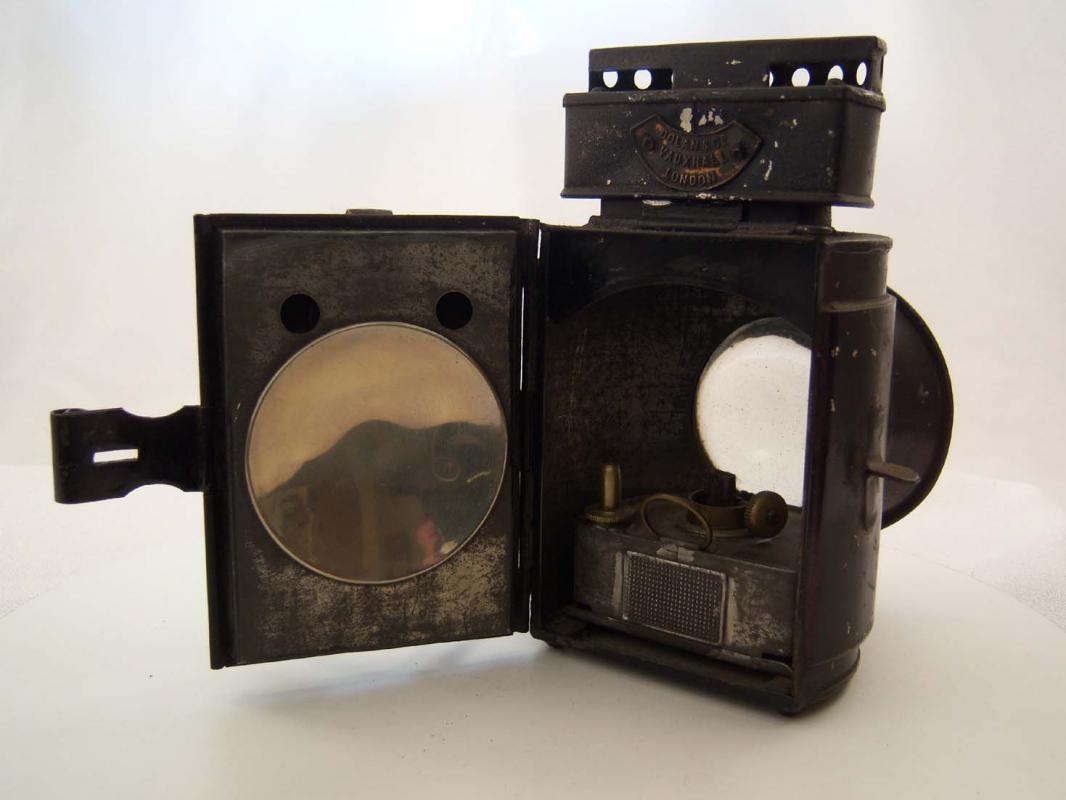
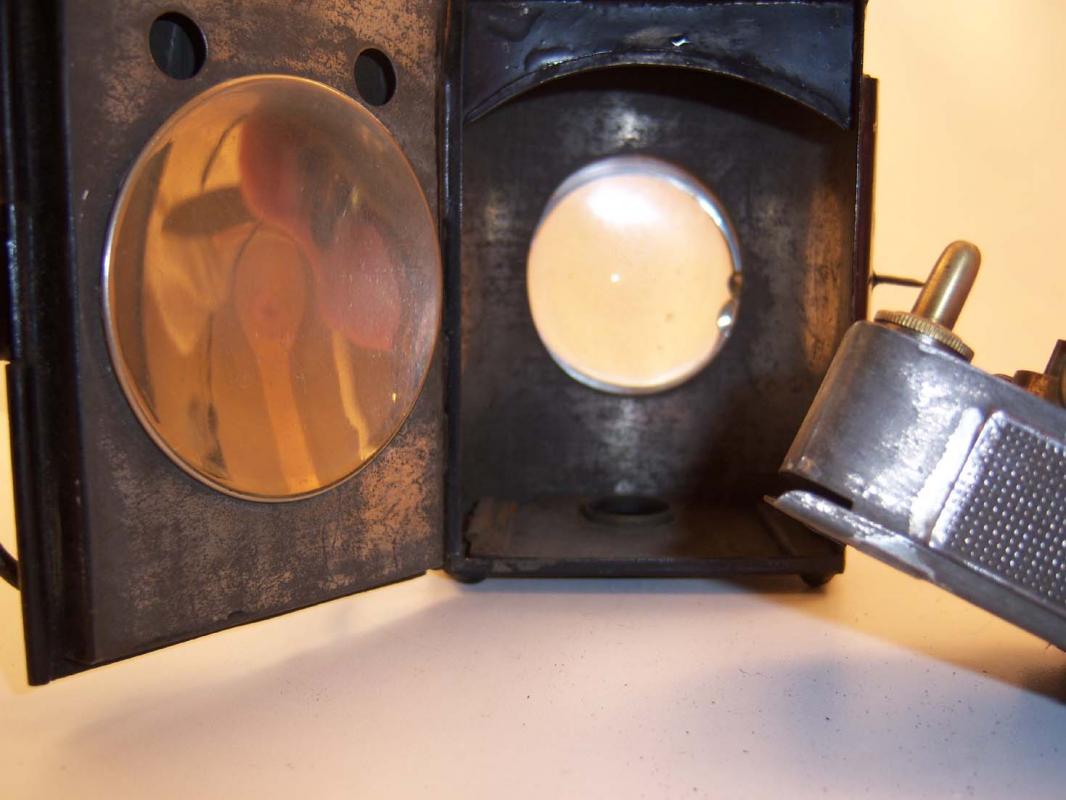 0
0 -
Hi Larry,
That's it! Many, many thanks.
Regards
Brian
0 -
Hi Nick,
Thanks, but no it was the writing on the box lids. I know I saw it somewhere and it had to be here on the GMIC as I don't visit any other forums. Unless it was somewhere on the internet and if so I have no hope of finding that link again,
It may be Lost in (Cyber) Space.
Regards
Brian
0 -
Please see my book For Free India. at www.freeindianlegion.info or contact me at aadneeven2002@yahoo.com
Hello Heho,
Welcome to the GMIC. I regret to inform you that Ed no longer visits us here but he can be reached, if you so desire, at Sagongs forum.
Regards
Brian
0 -
There was a post a while back that showed the three different emperor's names found on the medal boxes and I cannot seem to find it now.
If anyone remembers which post had that information it would be most helpful, I know is was part of a post that I believe started out as a different topic.
I usually print off such information and put it in my files but didn't this time.
Thanks for any assistance you can give me, it is most appreciated.
Regards
Brian
0 -
Calling this last group "nice" is an understatement.
My difficulity would be which collection to house it in, German or Japanese.
Thank you once again for posting these images.
Regards
Brian
1 -
Hi Peter,
I would indeed like the burner, if you locate it, thank you very much.
Some of my lanterns are missing their burners and I suspect they were taken out to be used in a work or hobby shop.
Regards
Brian
0 -
Brian
Very educational! Just getting caught up here but have two things to offer, one figuratievly and one literally.
My colleagues at the pioneer museum agree that neither tallow not hand dipped candles had woven wicks. Probably a relic of a 'living history' site or event. Dipping candles is a very common activity for school kids visiting muesums like ours [1837 pioneer farm] and historic reenactments set in the early 19th century.
I have a burner like those shown in Post #43! Picked it up years ago because it looked neat but was never quite sure what it was or what I could do with it - meant to use it to heat edge finishing tools in my cobbler's kit but don't actually do thast work any more. I'll have to see whether or not I can find it - I have a hrrible feeling I may have binned it last clean up - but if I do I'll send in a photo of it.
Hi Peter,
Thanks for that conformation. I've seen the hand dipping of candles at pioneer villages but, of course, just assumed they would be using modern wick.
I do hope you can locate that burner and would like very much to see a photo of it posted here.
Regards
Brian
0 -
This thread is an interesting read. I was not aware such a diversity of lanterns.....
Larry
Hi Larry,
Thanks for the comment.
When Mervyn got me hooked on these artifacts I figured I'd purchase one or two, tops, and that would be it.
Everytime I would add one I'd see yet "one more"... and you know that story.

Regads
Brian
0 -
As indicated by the title of this section the lamp we are looking at now was patented as The Crescent Lamp by Dolan & Co. of Vauxhall, London, England. Vauxhall is located in central London and upon checking this out I found that it would appear that one could not find the very centre of the city any more accurately than being in Vauxhall.
I believe one of the best know items to come out of Vauxhall was the automobile by the same name.
Below I have shown the two brass plates that are riveted to the lantern.
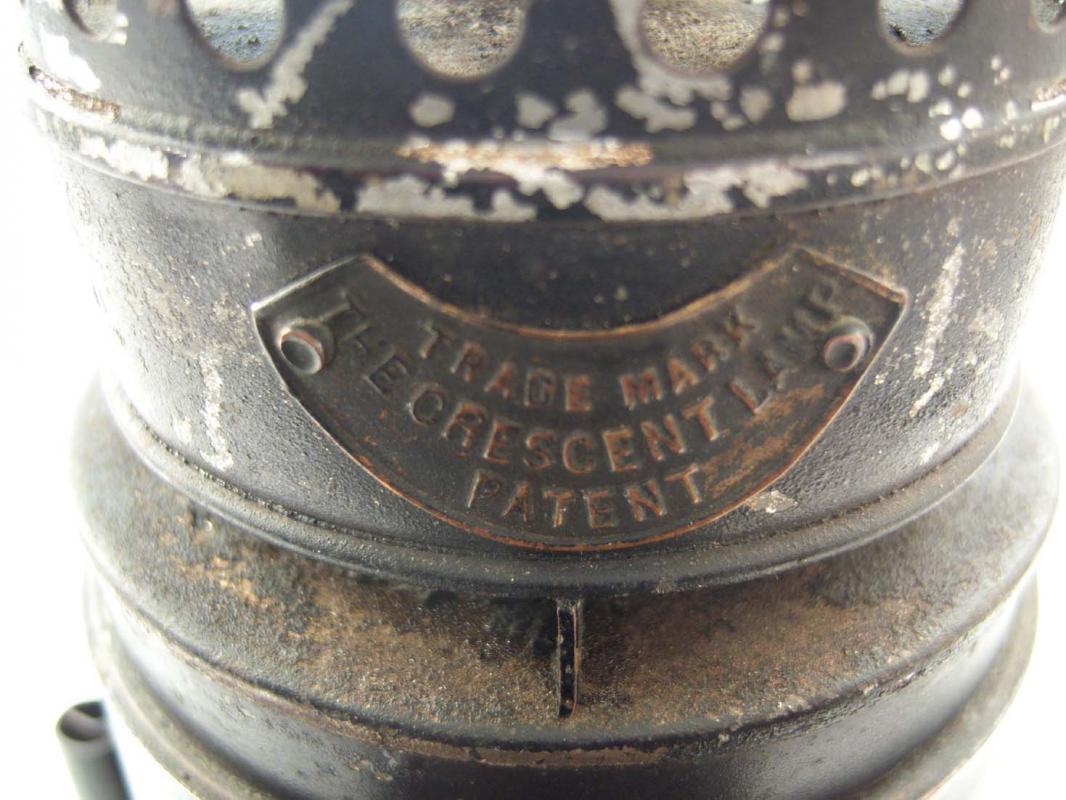
 0
0 -
The Crescent Lamp
One of the most unique lanterns I’ve seen and certainly the most unique in my own collection is this one designed by Philip Bicknell, chief constable of Lincolnshire, 1856 – 1902. Lincolnshire, a predominantly agricultural area, is situated in the east of England.
This particular lantern is marked on the bottom as having being issued to PC 188 Walker. To me this would suggest that the local force was small as a larger police service would probably have had someone who cleaned the lanterns daily and then simply reissued a random lantern, possibly numbered and recorded at that time, to the officers as requested. That of course is pure speculation and I stand to be corrected on this point (or any point for that matter).
The first thing that strikes anyone who sees this lantern, compared with the “usual” specimens, is that the top is flat and not conical. This was done, according to Richard Cowley in his book, “A History of the British Police”, to allow a cup of tea or coffee to be rested on the top in order to keep the contents warm. I always appreciate it when manufacturers consult those who use their products in order to gain insight into designing better and, of course, more appealing items for the consumer.
One of the views below shows the double hook that allows the lantern to be attached to the duty belt. Most of the other lanterns I have seen only have a single hook.
We’ll also take a closer look at the innovative design features of this lantern as this article progresses.
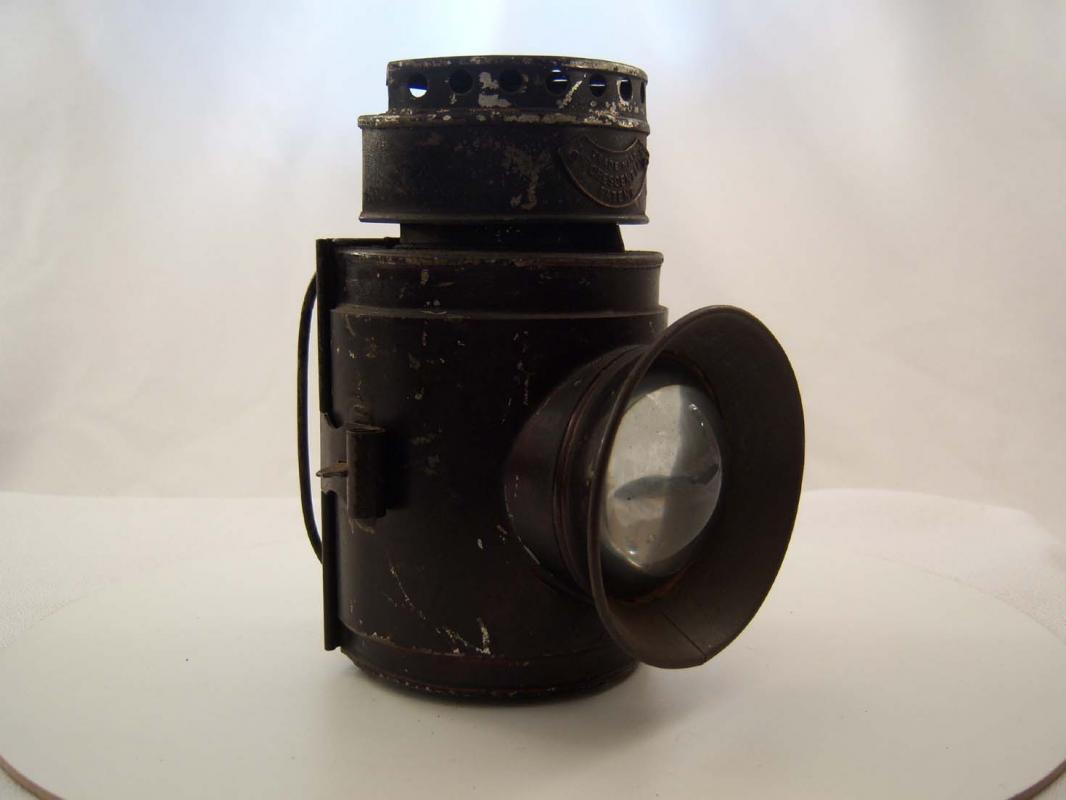
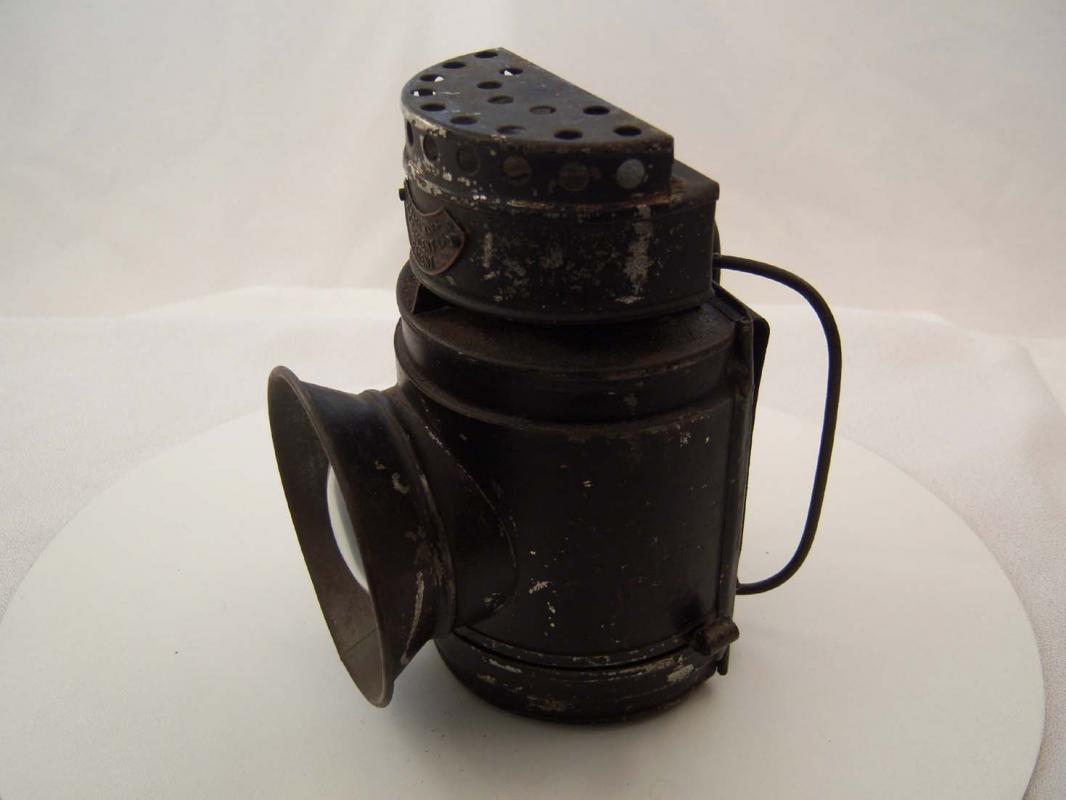
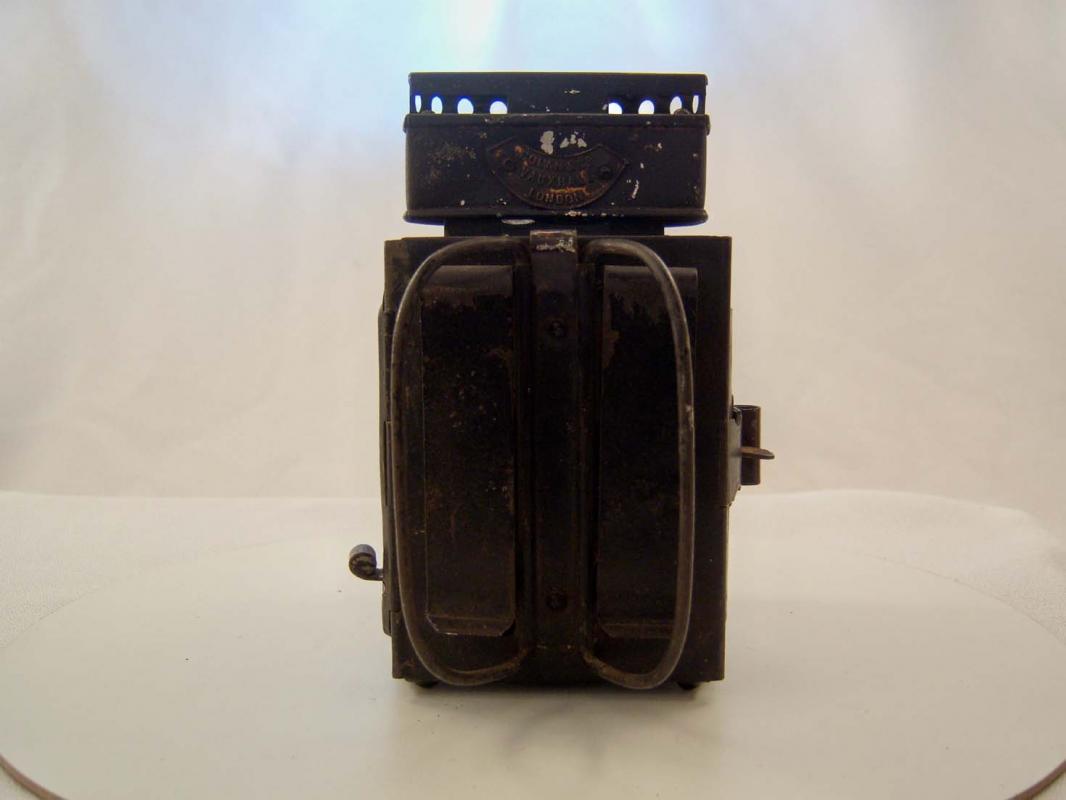 0
0 -
Yep, a combat shotgun that even a child can use, what more could one want?

Great video Chris.
Regards
Brian
0 -
Sad that this ever happens.
Let us know what the metal place says.
Regards
Brian
0 -
One of the specimens in the collection also sports a wooden handle so that the lantern may be carried much like a railroad lantern. This makes me wonder if this may have been used by railway police or guards. That's pure sepeculation and I would welcome comments from other members as to this possibility.
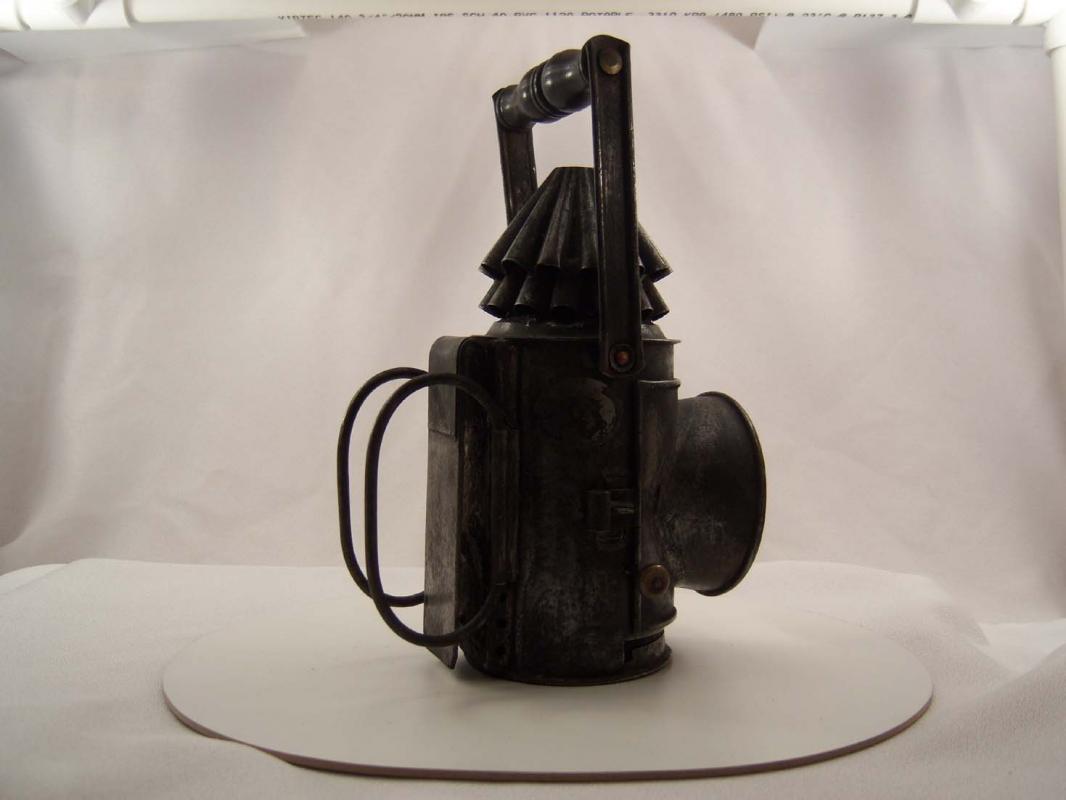
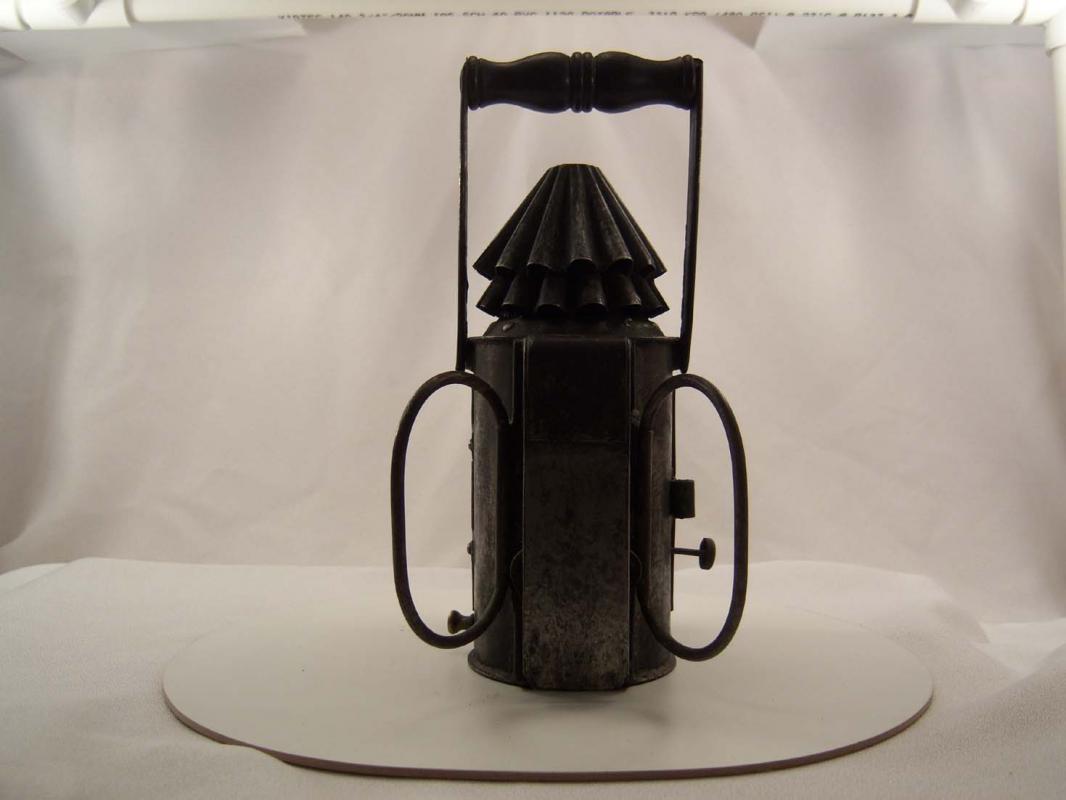 0
0 -
The belt hook itself varied in width depending upon the manufacturer and perhaps over time, as an evolutionary development.
Below is show two examples the narrow one is 1/2 inch in width and the wider one is 1 1/2 inches.
The photo to the right shows a variety that has two hooks which I would think would give the lantern more stability on the belt and keep the lantern horizontal.
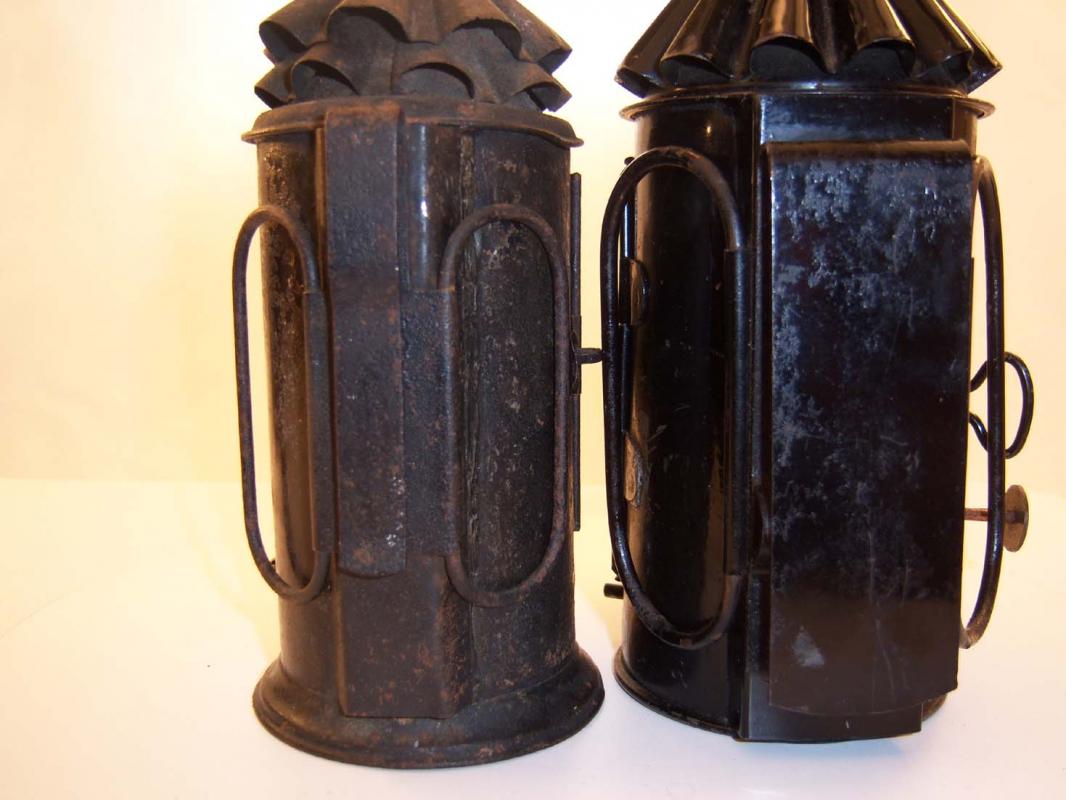
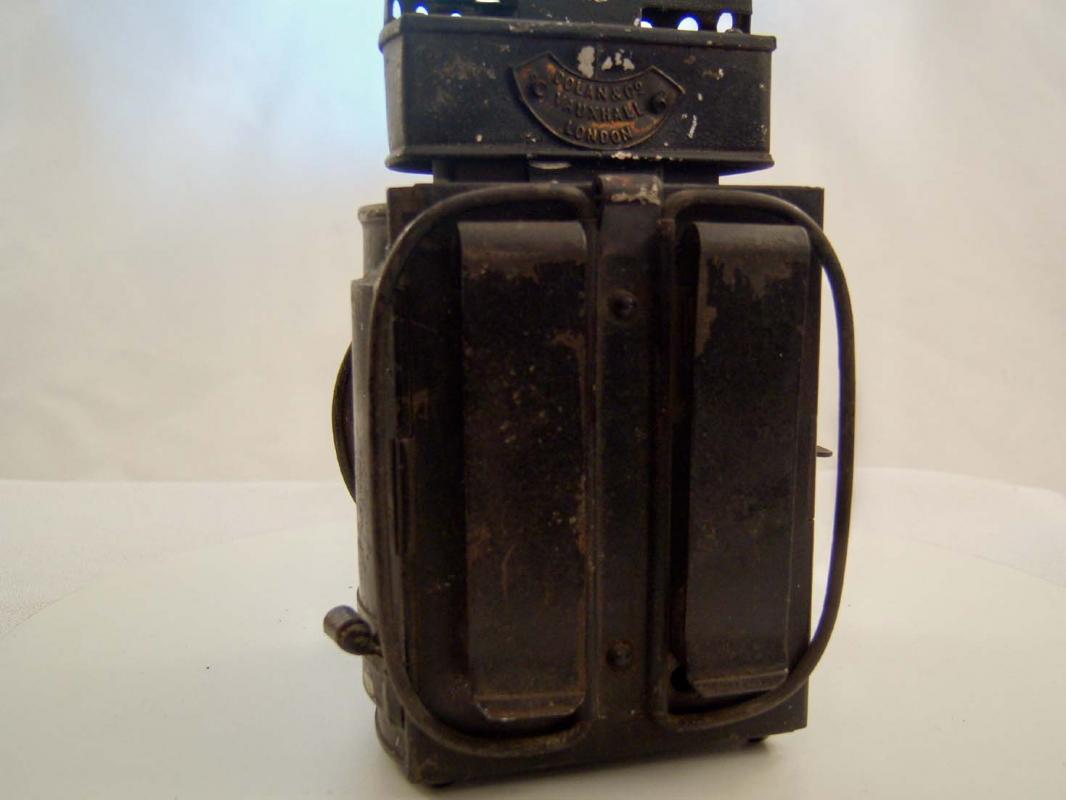 0
0




Iconic Firearms - what do you think?
in Firearms & Ordnance
Posted
Remington
Derringer Mod.95
To me nothing screams frontier gambler like a
derringer. Whether on the riverboats
plying their trade along the mighty Mississippi or in a smoke filled saloon of
a dusty frontier town the professional gambler would not be far away. There is nothing like a good game of five
card draw poker or a turn at craps to put some life in a cowpoke’s break from
the drudgery of a cattle drive while in town for the night. Not too far away would be the gambler’s
friend, his trusty derringer, to persuade a cowhand that the loss of his hard
earned wages was secondary to the risk of the loss of his life; if he
questioned the honesty of the game.
Actually these were sold more to the ladies than to
gamblers. One of these secreted away in
a purse, the folds of a dress or in the furry hand warmer was just the ticket
to make life outside of the home a little safer. The hand warmers were referred to as a “muff”
therefore the term often applied to a small concealable pistol was a “muff gun”.
Gentlemen also carried these pocket pistols for protection so even though they
remind me of the frontier gambler their use was more often by the upper class
ladies and gentlemen.
This particular example is the Remington Model 95
double-barreled pocket pistol, or derringer, in .41 cal. rim-fire. Remington made derringers for around 70 years
starting in 1866. This specimen has a
cartridge extractor which is a feature added in 1869 and the inscription on the
barrel rib reads “REMINGTON ARMS CO.
ILION N.Y.” which first appeared in 1888 and then changed in 1910. Therefore this specimen would have been made,
by my reckoning, sometime between 1888 and 1910.
Now for the question, keeping in mind that to me these
are iconic of the old west saloon gambling table, what is the down card in the
photo? I’ll start the clock now to see
who gets the answer first. Good luck.
Regards
Brian